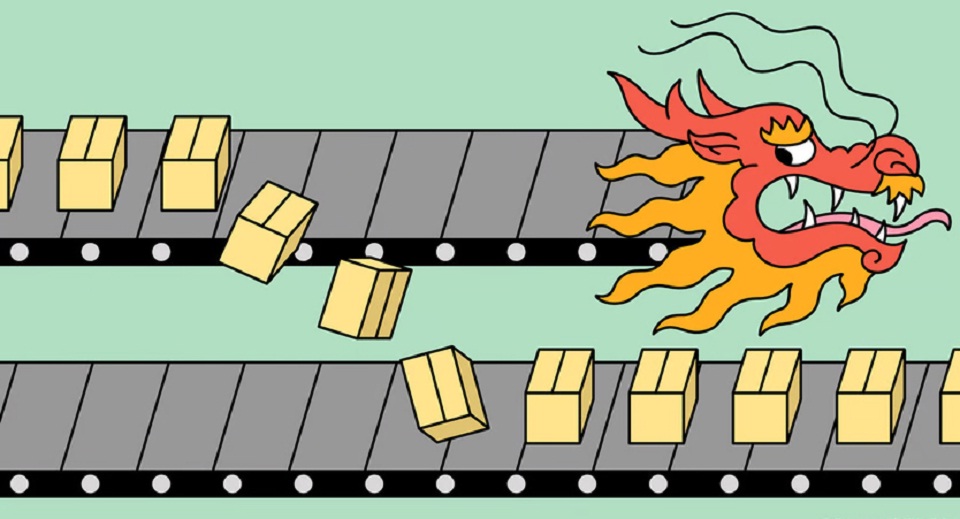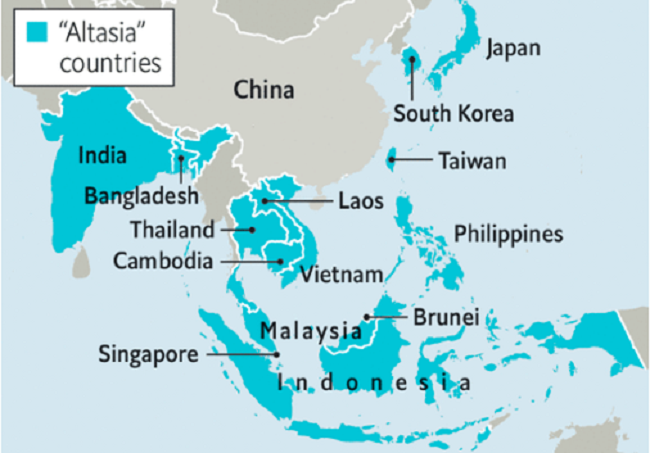
According to the analysis of the authoritative magazine Economist.
This alternative, which the British reviewers call Altasia, the “Asian Tigers”, is now the perfect solution for those corporate giants who want to become independent from China.
There are several reasons for this: Chinese labor is no longer so cheap, with manufacturing wages doubling between 2013 and 2022, averaging $8.27 an hour. More importantly, the deepening technology gap between Beijing and Washington is forcing high-tech manufacturers, especially those using advanced semiconductors, to reconsider their dependence on China.

Between 2020 and 2022, the number of Japanese companies operating in China dropped from 13,600 to 12,700, according to research firm Teikoku Databank.
On January 29, it became known that Sony plans to move the production of cameras sold in Japan and the West from China to Thailand. South Korean company Samsung has reduced its Chinese workforce by more than two-thirds from its peak in 2013. US computer maker Dell is reportedly planning to phase out chips made in China by 2024.
Question to Dell, Samsung, Sony and their colleagues: where will you produce what you need? No country offers China’s extensive manufacturing base. But together, the sum of the economies across Asia, this presents an impressive alternative. It arcs from Hokkaido in northern Japan through South Korea, Taiwan, Philippines, Indonesia, Singapore, Malaysia, Thailand, Vietnam, Cambodia and Bangladesh to Gujarat in northwestern India.
States in this arc have a range of strengths, from Japan’s high skills and deep pockets to India’s low wages. On paper, this is the possibility of a significant division of labor: some countries produce complex components, while others assemble finished devices from them. But whether this works in practice will be an important test of the emerging geopolitical order.
This alternative Asian supply chain, which the Economist calls Altasia, is as powerful as China, or even stronger. Its combined working-age population of 1.4 billion even exceeds China’s 980 million. There are 154 million college-educated people aged 25 to 54 in Altasia, compared to 145 million in China, and, unlike in an aging China, their ranks seem to be growing.

In many parts of this arc, wages are significantly lower than in China: hourly manufacturing wages in India, Malaysia, the Philippines, Thailand and Vietnam are less than $3, about a third of what Chinese workers earn today. And the region is already an export hub, with members selling $634 billion worth of goods to America in the 12 months to September 2022, surpassing China by $614 billion.
Altasia is also more financially consolidated. All countries except India, Bangladesh and Taiwan have joined the Regional Comprehensive Economic Partnership (RCEP), which includes China. By harmonizing rules of origin in the region’s various existing trade agreements, the pact created a single market for intermediate goods. This, in turn, has lowered regulatory barriers for complex supply chains spanning multiple countries.
Most countries are members of the Indo-Pacific Economic Mechanism, a recent US initiative. Brunei, Japan, Malaysia, Singapore and Vietnam are members of the Comprehensive and Progressive Trans-Pacific Partnership (CPTPP), which also includes Canada, Mexico and several countries in South America.
Altasia will definitely not replace China anytime soon. But over time, China is likely to become less attractive to foreign manufacturers. And as a new alternative in China, Altasia is unmatched, the Economist notes.
Source: Economist.
Source: Kathimerini
Lori Barajas is an accomplished journalist, known for her insightful and thought-provoking writing on economy. She currently works as a writer at 247 news reel. With a passion for understanding the economy, Lori’s writing delves deep into the financial issues that matter most, providing readers with a unique perspective on current events.